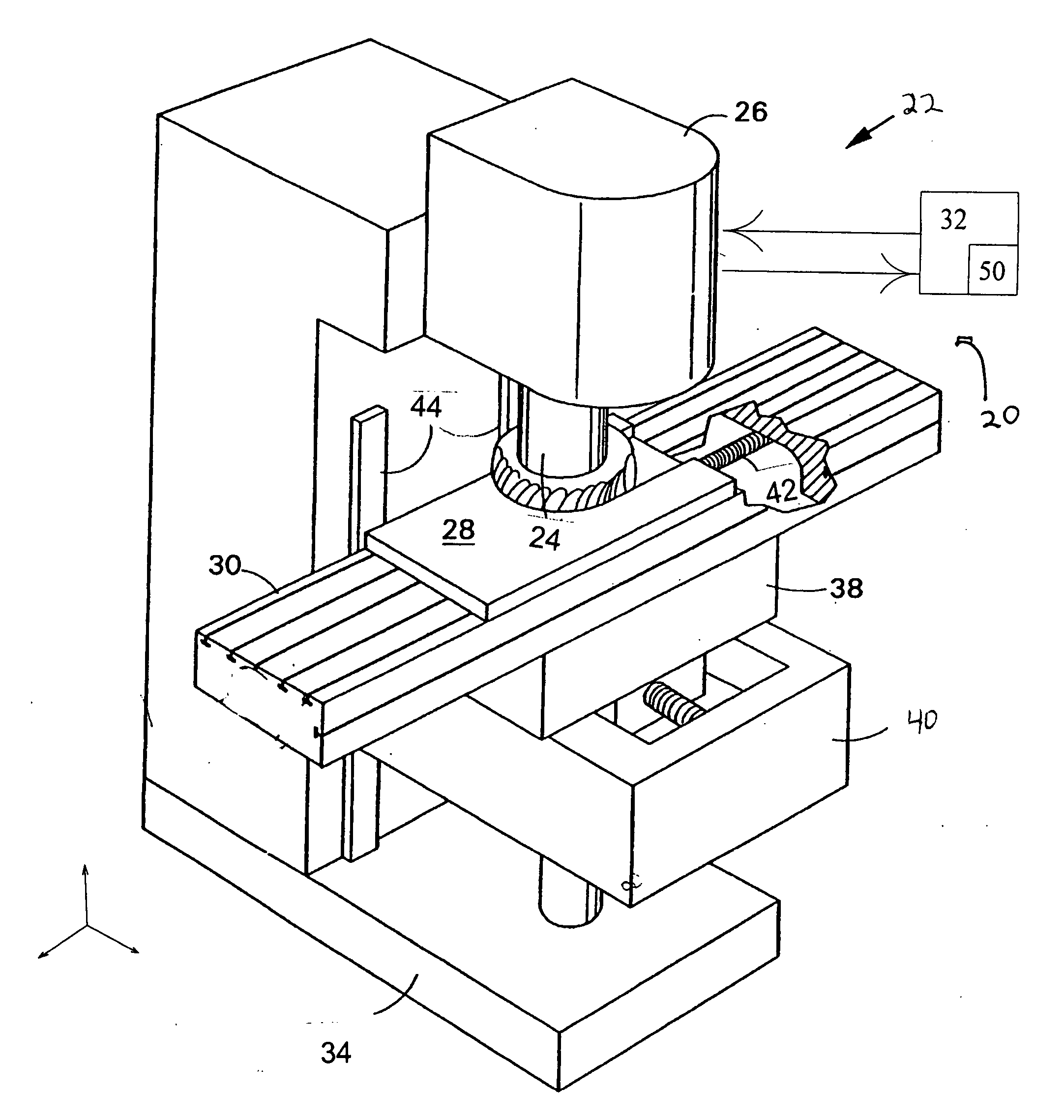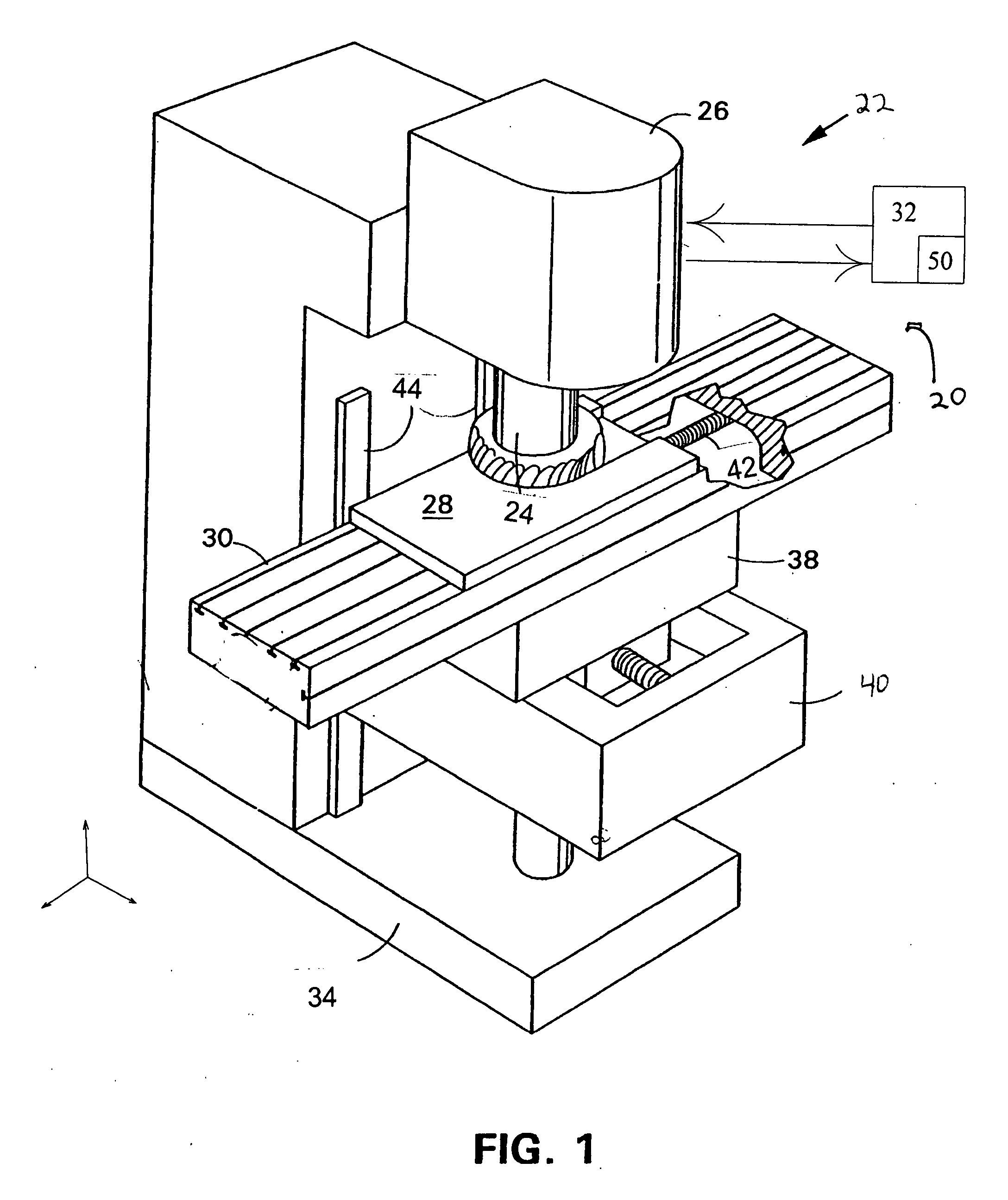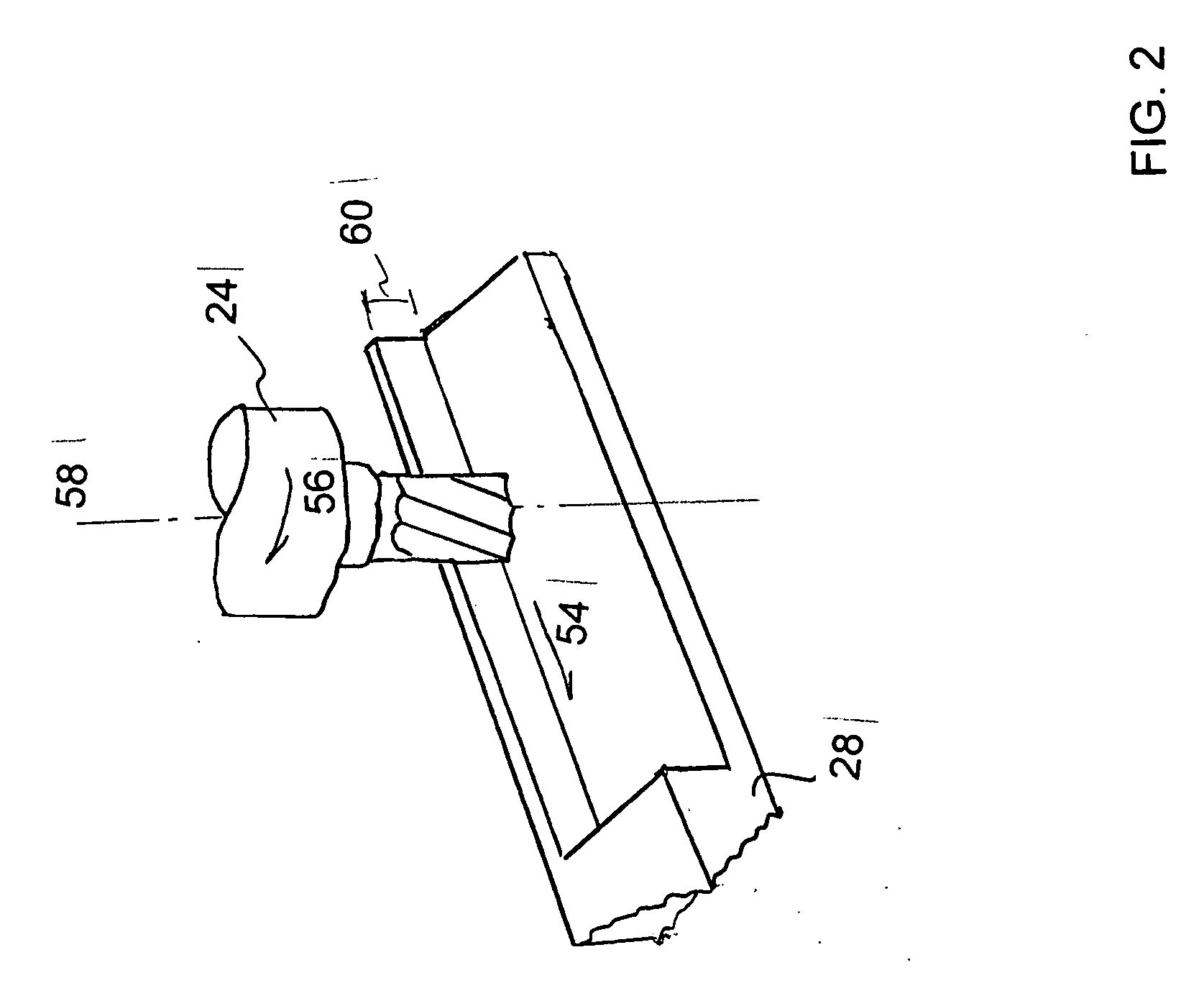Method to measure tool wear from process model parameters
a process model and parameter technology, applied in the field of tool wear measurement, can solve the problems of inability to determine when the tool wear is excessive, no well established guidelines, and the dual (sharp vs. dull tool) spindle power recording process is too cumbersome, so as to facilitate the access of spindle power and facilitate the measurement of tool wear
- Summary
- Abstract
- Description
- Claims
- Application Information
AI Technical Summary
Benefits of technology
Problems solved by technology
Method used
Image
Examples
Embodiment Construction
[0030]The present invention uses process model parameters in place of spindle power to monitor the state of tool wear. The use of process model parameters removes the dependence of the wear criterion on part geometry and also provides a useful mechanism to distinguish between different tool wear mechanisms. Slowly varying tool wear mechanisms, such as flank wear, can be monitored in a progressive fashion with one class of process model parameters while another class of process model parameters can provide a precursor alert when more precipitous wear mechanisms (e.g. notch or crate wear) dominate.
[0031]Referring to FIG. 1, a perspective view of a tool wear system 20 with a typical three axis milling (metal removal) machine 22 is shown. The tool wear system 20 has a machine tool such as the milling machine 22 with a tool 24. The tool 24 is held by a machine head 26 of the milling machine 22. The tool 24 operates on a work piece 28. The work piece 28 is held by clamps or other methods ...
PUM
 Login to View More
Login to View More Abstract
Description
Claims
Application Information
 Login to View More
Login to View More - R&D
- Intellectual Property
- Life Sciences
- Materials
- Tech Scout
- Unparalleled Data Quality
- Higher Quality Content
- 60% Fewer Hallucinations
Browse by: Latest US Patents, China's latest patents, Technical Efficacy Thesaurus, Application Domain, Technology Topic, Popular Technical Reports.
© 2025 PatSnap. All rights reserved.Legal|Privacy policy|Modern Slavery Act Transparency Statement|Sitemap|About US| Contact US: help@patsnap.com



